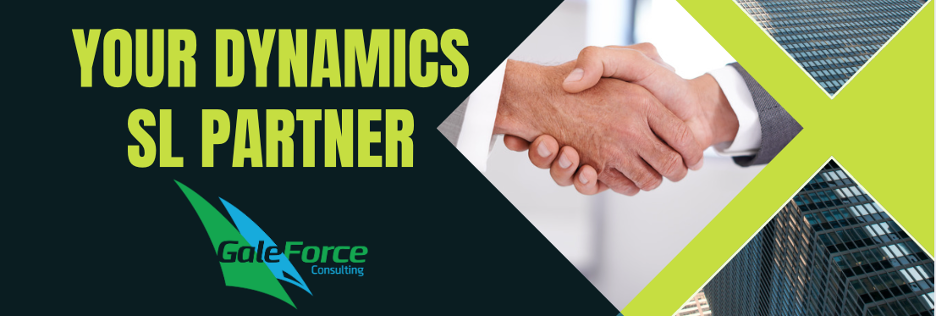Dynamics SL vs. Modern ERP: Should You Stay or Should You Go?
The death knell for Dynamics SL has been tolling for years. But now, the time is here. Microsoft is making no secret of the fact they are no longer investing in this ERP product.
Microsoft has drawn a line in the sand by ending mainstream support. They are driving users to their latest cloud ERP offerings which are distinctly different than what you’ve become accustomed to. Worse, migrating isn’t a simple process, and you may lose some of the project-based accounting features you’ve come to love in Solomon.
For a business owner, this scenario can feel irritating and unnecessary. Your ERP system is the backbone of your operations, managing everything from financials to supply chain logistics. Now you’re left to decide between two choices.
First, you could stay on a legacy ERP solution that no longer has updates and support, with the cybersecurity risks that it brings. You’ll also have to cope with yearly compliance adjustments manually, and there will never be any new features to look forward to.
The other option is the task of finding a replacement solution that not only aligns with your unique business needs but also integrates seamlessly with your existing workflows. (Although we have a recommendation we think you’ll like. We’ll tell you more about that later.)
Let’s talk about what happened, where you go from here, and how to get there.
What Does Dynamics SL Sunsetting Actually Mean?
The term “sunsetting” refers to Microsoft’s decision to discontinue support and updates for Dynamics SL. That happened in January 2024. Security updates will continue to be available until 2028, but you’ll want to work closely with your Dynamics partner to ensure you receive them.
Should I Stay or Should I Go?
Whether you stay with Dynamics SL, or move to a new ERP, there will be some, well… “trouble.” Let’s take a look at the pros and cons of each option.
Deciding to stay on Dynamics SL ERP
Even though Dynamics SL is not being actively updated by Microsoft, many of the businesses we work with have decided to stay on the system for one reason or another.
Here are a few of the pros of staying on your current ERP system:
- Minimal investment: You’ve already paid for it. You just need a maintenance plan from your preferred vendor to keep it going.
- Business Stability: Why upset the apple cart? You have jobs to do and projects to complete. Implementing a new ERP will slow things down, and now isn’t the time.
However, this option comes with a few downsides:
- No New Features: Without new features or enhancements, businesses will miss out on technological advancements that could improve efficiency and functionality. Without compliance updates, you’ll have to handle changes in taxes and other regulations manually.
- Compatibility Issues: As other applications in your technology stack continue to evolve, Dynamics SL may no longer integrate well with them, potentially leading to operational difficulties.
- Stagnation: Continuing to use an unsupported ERP system can limit a company’s ability to adapt to market changes and growth opportunities.
Upgrading to a new ERP Solution
Maybe you’re thinking about a new ERP solution. Upgrading from Dynamics SL is more than moving to a system with longer-term prospects. It’s also an opportunity to evaluate your business and identify ways to enhance your operations.
Here are some reasons to consider making the move:
- Enhanced Security: Newer ERP systems, especially today’s cloud-based solutions, provide better security features and regular updates, helping protect your data from cyber threats. Running your software safely behind the hardened defenses of a cloud provider like Microsoft Azure is more secure than almost any on-premises deployment.
- Improved Compliance: Modern ERPs are designed to help you stay compliant with current regulations, reducing the risk of legal issues. Often, compliance updates are delivered automatically without interruption to your daily operations.
- Competitive Advantage: By upgrading to a more modern ERP, you can leverage new technologies and functionalities, giving you an edge over competitors still on outdated systems.
- Increased Efficiency: Modern ERP systems offer improved usability and integration with a wider range of business applications, streamlining processes and boosting productivity.
Are there downsides? Sure. But they’re not as painful as you might think.
- Downtime: It’s true, you’re going to need to make time to evaluate your needs and business processes to form a plan. But this pays off in a large way. With a new, modern solution you’ll gain many performance benefits, anytime/anywhere access, even from mobile devices, and so much more. If the implementation is well-executed, you could view it as a pit stop in a race – a necessary pause in operations to refit and refuel so you can move even faster toward your goals.
- Expense: There is an initial investment when migrating to a new ERP. However, have you considered the potential savings over the following years? Eliminating on-premises infrastructure and costly hardware upgrades and reducing or reallocating IT staff may save you thousands of dollars each year, more than covering the cost of a new ERP solution.
So, if you decide to make the leap, what’s next?
Steps to Transition from Dynamics SL to a New ERP Solution
Migrating to a new ERP system involves several critical steps to ensure a smooth transition:
- Educate Your Team: Inform your staff about the sunsetting of Dynamics SL / Solomon and the benefits of migrating to a new system.
- Assess Needs: Collaborate with your team to identify specific business requirements, goals, and challenges.
- Evaluate Vendors: Research potential ERP solutions and vendors, focusing on those that offer scalability and industry-specific features. Acumatica is a strong contender in this arena, with functionality that matches and exceeds Solomon, but on a modern, flexible platform.
- Plan the Migration: Develop a detailed migration plan including timelines, data transfer strategies, and user training.
- Implement Support Structures: Make sure support and training are available to assist your team throughout the transition.
- Test the New System: Conduct thorough testing to ensure the new system meets all your business needs and that data has been accurately migrated.
- Go Live: Launch the new ERP system and provide ongoing support to address any emerging issues.
Why Should You Consider Gale Force Consulting and Acumatica?
Gale Force Consulting has worked with Dynamics SL for decades. We have been in the trenches with companies like yours, and we’re well-prepared to support your business during this transition. For example:
- Ongoing Support: Gale Force will continue to support your current Dynamics SL system until you are ready to migrate.
- Expertise in Migration: When you decide to move to a modern ERP solution like Acumatica, Gale Force can guide you every step of the way, ensuring a smooth transition.
Many clients transition from Dynamics SL to Acumatica Cloud ERP. Why? Its flexibility and project-based modules give your business the features and tools needed to stay competitive and grow. You might not have known this, but key members of the Solomon team later left and joined Acumatica. You’ll find many similar paradigms in this modern platform, making you feel right at home in your new ERP.
Tack to Acumatica
Additionally, we have developed a package specifically for businesses moving from Dynamics SL to Acumatica. It’s designed to protect your valuable historical data while moving you to a new system, saving you money, integrating with a wide range of business apps, and delivering enhanced functionality. Learn more about our Tack to Acumatica program.
Migrate with a Partner You Can Trust
Transitioning from Microsoft Dynamics SL is a significant step for any business. The thought alone can be overwhelming, but it also opens the door to exciting possibilities. This is a chance to explore modern, more efficient solutions that could revolutionize how you run your business, unlocking new levels of productivity and growth. Embrace the change with passion and creativity—this could be the perfect opportunity to propel your business into the future!




